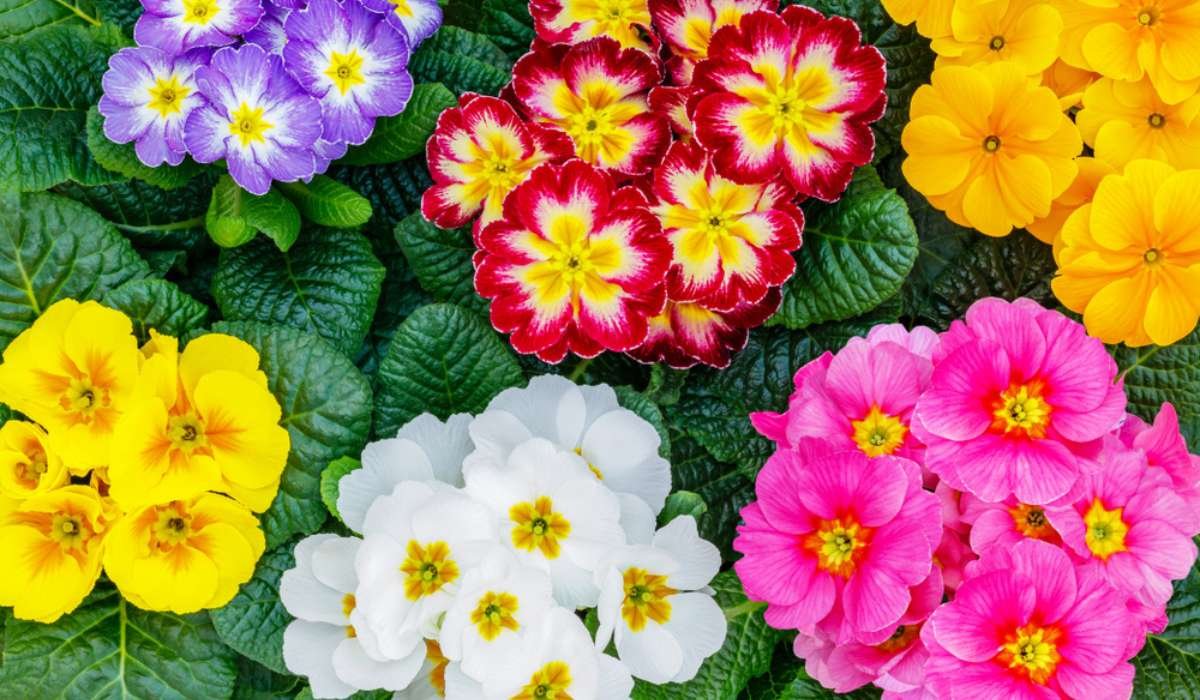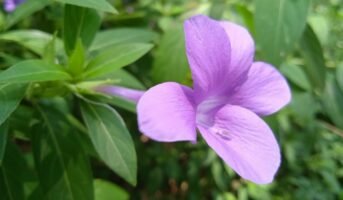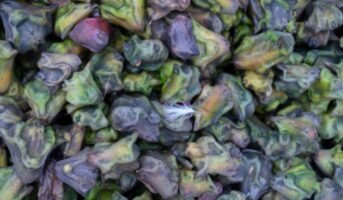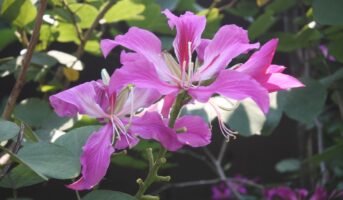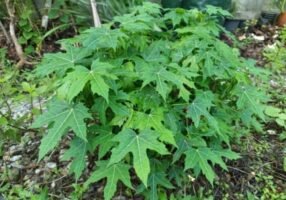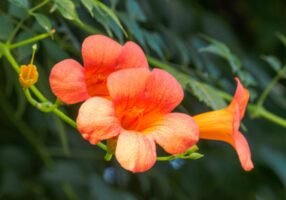Primrose, a harbinger of spring, graces gardens with its vibrant blooms and easy charm. These short-lived perennials, commonly known as primroses or English primrose, captivate with low rosettes of lush green leaves and vibrant flowers on sturdy spring stalks. The Primula vulgaris, synonymous with early spring, graces us with sunny yellow blooms. Native to Europe and parts of America, Asia and Africa, this perennial adds a splash of colour with its showy flowers in spring through fall, making it a favourite among garden enthusiasts. This article will provide a detailed overview of primrose, covering key facts, varieties, growth, care tips, benefits and potential toxicity.
See also: How to grow and care for prickly pear cactus at home?
Primrose: Key Facts
| Name | Primula vulgaris |
| Genus | Primula spp. |
| Common Names | Primrose, polyanthus |
| Family | Primulaceae |
| Origin | Europe, Africa, America, Asia |
| Soil | Moist, well-drained |
| Soil pH | Acidic |
| Hardiness Zones | Zones 3-8 (USDA) |
| Sunlight | Partial, shade |
| Flowers | Red, pink, orange, yellow, blue, purple, white |
| Leaves | Pale to dark green |
| Bloom Time | Spring |
Primrose: Characteristics and types
Primula Vulgaris, the common primrose, boasts a height of 4–12 inch and a width of 4–9 inch. Its rosette of wrinkled leaves forms a base for bell-shaped, fragrant flowers in shades of yellow, white, and occasionally pink. These clusters bloom in spring, attracting pollinators like bees and butterflies. The plant produces tiny black seeds in a valved capsule, often dispersed by ants and occasionally by birds. Varieties include Primula x polyantha, Primula denticulata, and Primula japonica and more, each offering unique colours and characteristics.
Types of Primrose
| Types of Primrose | Description | Hardy Zones |
| ‘Blue Zebra’ Primrose | Primula vulgaris with white blossoms striped with blue. Distinctive look. | 4-8 |
| Japanese Primrose (Primula japonica) | Primula japonica, candelabra group, 1- to 2-foot stems with tiers of pink, red, or white flowers. Rosettes of 6- to 12-inch spoon-shaped leaves. | 4-8 |
| Primula vulgaris | Primula vulgaris ‘Quaker’s Bonnet’ with double light orchid with yellow flowers, 6 to 9 inches tall. | 4-8 |
| Vial’s Primrose | Primula vialii with large puckered leaves, leafless stems topped with spikes of brilliant purple flowers. Prefers moist alkaline soil. Up to 2 feet tall. | 5-8 |
| Primula x polyantha | Modern hybrid primroses with vibrant colours. | 5-7 |
| Primula denticulata | Drumstick primrose native to the Himalayas. | 2-8 |
| Primula veris (cowslip) | Yellow-flowering species, native to Europe and Asia. | 3-8 |
| Primula japonica (Japanese primrose) | Ideal for water features, it blooms in late spring. | 4-8 |
Primrose: How to grow?
Primroses are simple to grow, known for their high resilience and flexibility. It can be propagated through seeds or root basal cuttings. Follow these notable factors for a successful cultivation:
Plant selection
Primrose perennials can be found in most garden centres and nurseries. Choose healthy plants with unopened buds.
Growing from seeds
Use a medium with equal parts soil, sand, and peat moss for seed growth. Start indoors during winter or outdoors in cold frames. Sow seeds in a cold frame after ripening, ensuring temperatures stay below 68°F and moderate humidity. Transplant seedlings when they reach a suitable size.
Basal cutting or division
It is best done in the fall or after the flowering season. Divide the plant every other year for optimal growth.
Planting seedlings
Transfer seedlings to the garden after developing two or three sets of leaves. Some varieties can be propagated from cuttings in summer.
Preventing root-bound growth
Regularly divide or repot primroses to avoid them becoming root-bound.
Container gardening
Primroses can grow in containers with excellent drainage using a commercial potting mix. But while using a container for planting, regularly repot the plant into a bigger one. It prevents fertiliser buildup, ensuring healthy plant growth.
Primrose: Care tips
The following are the essential steps when caring for Primrose:
- Ideal conditions: Primroses thrive in partial shade but can tolerate full sun with increased watering.
- Watering: Keep soil moist but avoid constant waterlogging. Mulching helps retain soil moisture.
- Humidity: Moderate humidity required.
- Fertilising: Hybrid primroses benefit from regular feeding with half-strength liquid fertiliser. Species types are less demanding.
- Size and growth: Under suitable conditions, primroses can reach 4”–12” in height and 4”–9” in width. Regularly dividing clumps maintains specific cultivars.
- Flowering and fragrance: English primroses boast showy, fragrant flowers in mid-spring, attracting pollinators like bees.
- Light and temperature: Prefers partial shade; some species do well in full shade. Hardy in zones 4 to 8, exposure to temperatures above 68°F during seedling stage inhibits growth.
- Soil: Thrives in organic, humus-rich soil. Mulching helps retain moisture in hot climates.
- Repotting: Repot annually to prevent root-bound growth. Use regular potting soil with compost. Transplant carefully, ensuring roots develop before moving.
- Grooming and maintenance: Low maintenance; occasional pruning and watering required. No winter protection is needed.
Primrose: Benefits and uses
Primroses aren’t just pretty; they have practical uses, too! Here are a few of them:
Planting locations
- Ideal for part shade in flower beds, rock gardens, and border fronts.
- Thrives under trees, in open woodland gardens, along paths, streams, ponds, and marshy areas.
- It can be potted in humus-enriched soil for porches with partial shade.
- Effective in hedgerows.
Culinary uses
- Primrose pottage: Once a popular dish.
- Tea: Infuse petals for a soothing drink.
- Cooking: Flowers can enhance custards, tarts, mousses, and more.
- Salads: Both leaves and flowers can be added for a peppery kick.
Medicinal applications
- Tea for health: Treat anxiety, sleeplessness, migraines, and more.
- Primrose extracts: Roots used in cough syrups and for rheumatism/arthritis.
- Wound healing: Ointments made from flowers cooked in lard were historically used.
Nutritional value
- Primrose leaves are rich in Minerals and Vitamin C. Moreover, the entire plant is abundant in Saponins and glucosides, especially the root.
Wildlife support
- Bee nourishment: Primroses provide essential nourishment for bees in winter and early spring.
Primrose: Pests and diseases
Primroses generally resist pests, but occasional challenges like spider mites, mealybugs, and aphids may arise. Adequate air circulation and non-chemical remedies are recommended. Leaf spot disease, indicated by brown lesions on leaves, can be prevented with proper care.
Primrose: Toxicity
Caution is advised, as primrose can be toxic to cats, dogs, and horses. In case of skin contact, it may cause blisters and inflammation of the affected area. When ingested, it may cause nausea and vomiting, diarrhoea, abdominal pain, irritation and redness of the mucous membrane of the mouth.
FAQs
What are good companion plants for primroses?
Your primrose will blend well with other shade garden plants such as ferns, hostas, and astilbe.
How long does a primrose plant live?
If provided the right conditions, primrose can live up to five years.
Where should I place primroses in my house?
Primrose plants need bright but indirect sunlight. The ideal location is a windowsill that is bright and faces north.
Can I start primroses from seed?
Yes, sow primrose seeds indoors 8 to 10 weeks before the last spring frost, ensuring proper stratification for stored seeds.
What kind of soil do primroses need?
Primroses thrive in moist, humus-rich soil with added leaf mould or peat moss.
What care do primroses need during summer?
Primrose needs shade in summer; ensure the soil doesn't dry out.
| Got any questions or point of view on our article? We would love to hear from you. Write to our Editor-in-Chief Jhumur Ghosh at [email protected] |
Priya Banerjee, a writer with a keen eye on the property market, she deciphers the ever-changing trends in residential real estate. Priya excels at simplifying complex real estate terms, making them easy for everyone to understand. Her well-researched advice helps buyers and investors understand complex topics.
